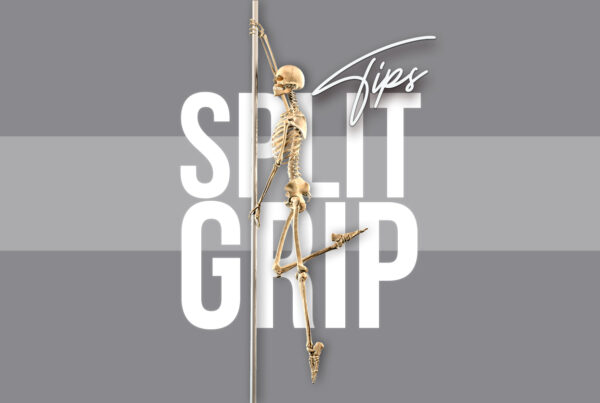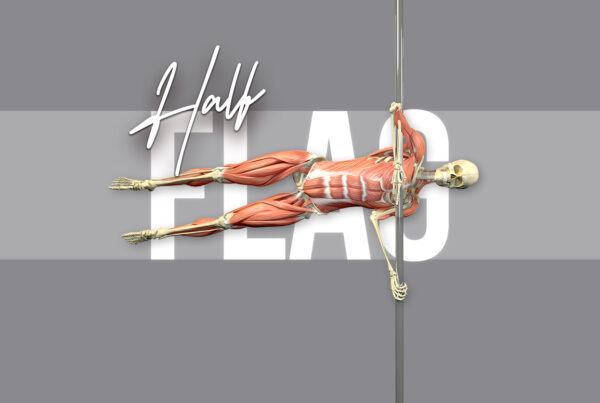Thoracic rotation… hip flexion… spinal extension… lateral flexion… plantar flexion… yadayadayada… I know, I know. I throw this kind of terminology around a lot! So I thought I’d step away from the trick-specific breakdowns for a minute to deep dive into some of these anatomical terms with you.
Don’t worry, I still have pole dancing skelly in tow! We’re planning on taking a super visual look at some of the language and mechanics of pole anatomy, and of course tying everything back to what we all came here for in the first place: POLE!
Why does any of this anatomy stuff matter? Well, the more we understand about how our bodies move, the more targeted we can be with how we train for pole.
Plus, I mean, c’mon – understanding the anatomy of pole is such a flex, right?! 🙂
In today’s post, I’ll be sharing a collection of ‘hip flexion’ factoids – this particular joint movement is a biggie for pole dancers!
Rather watch than read? I got you! You can watch the speedy 90 second summary of this post in the video below!
Nerdy fact 1: Hip flexion #goals
Hip flexion is this movement of bringing our femur (aka the old ‘thigh bone’) closer to our torso…
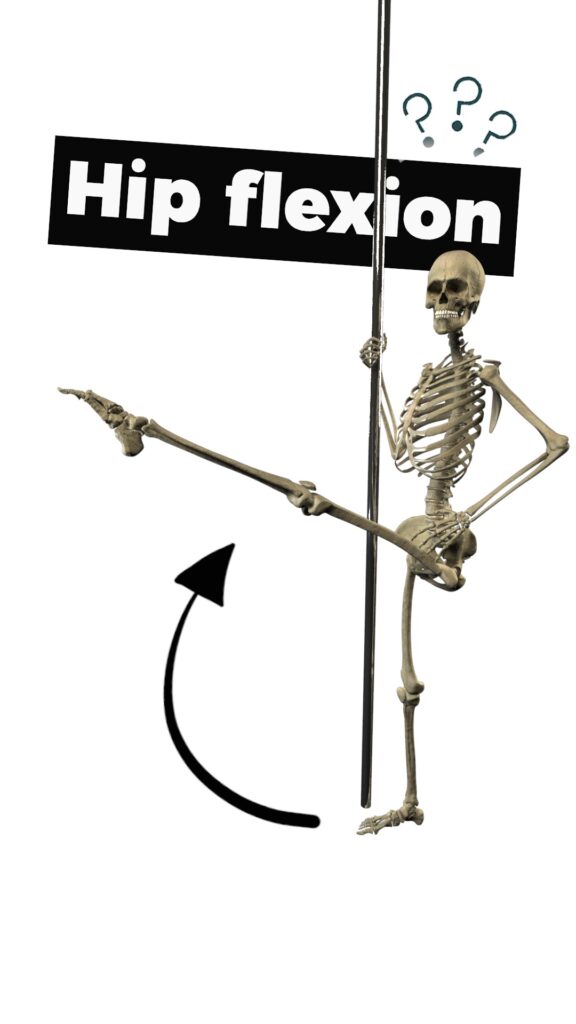
A really GOOD range of hip flexion for a “normal” person (by which I mean a non-pole dancer, just going about their usual muggle life) is around 90 degrees. But for more advanced pole dancers, this range is usually closer to around 120 degrees.
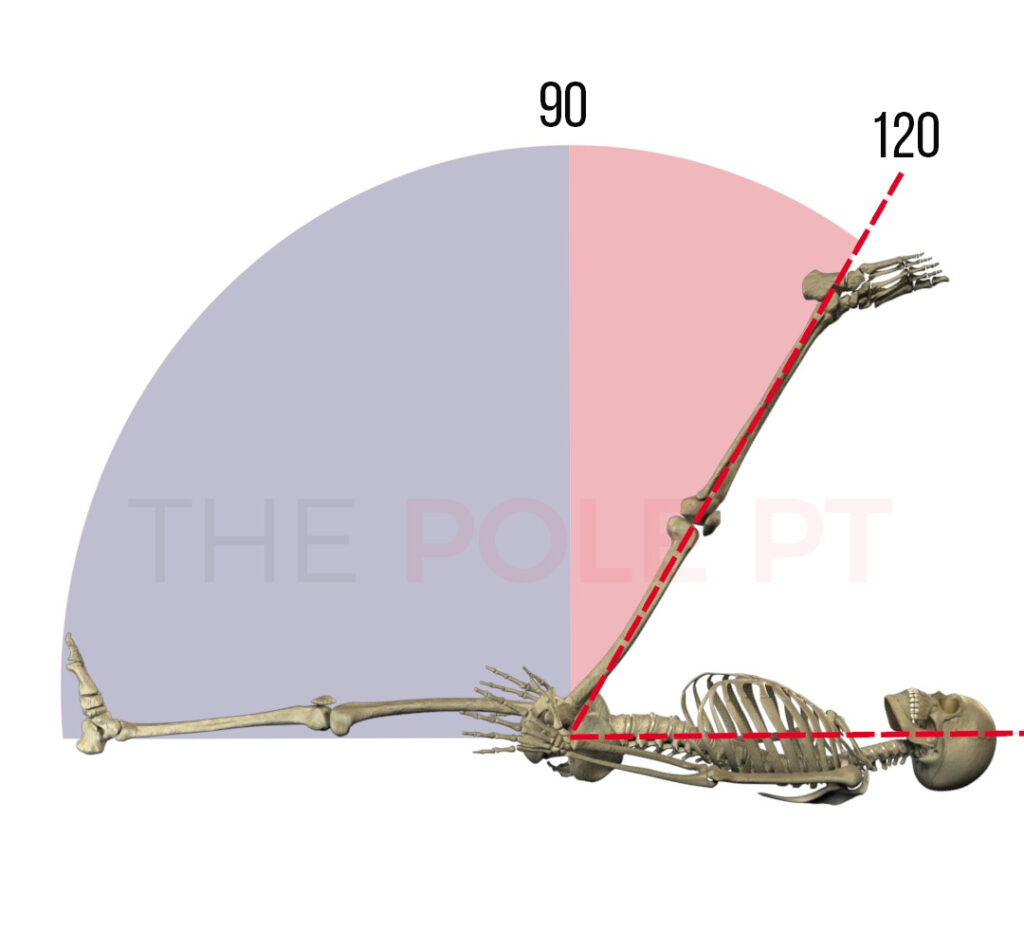
If you’re a beginner pole dancer, a good goal is to aim to reach that 90 degree mark. Beyond that, you can work to improve your hip flexion range gradually towards that 120 degree absolute #hipflexionGOALS level as you progress (depending of course, on what your goals are and whether you have any physical limiting factors to take into account!).
Nerdy fact 2: It’s EVERYWHERE!
We use this position of hip flexion allll over the place when we pole! Think in particular of any pike positions, or the front leg in the (MANY) front-split based tricks we do. But we also use it when we invert/shouldermount, and we often combine hip flexion with hip abduction and rotation to create all those straddles we love so much.
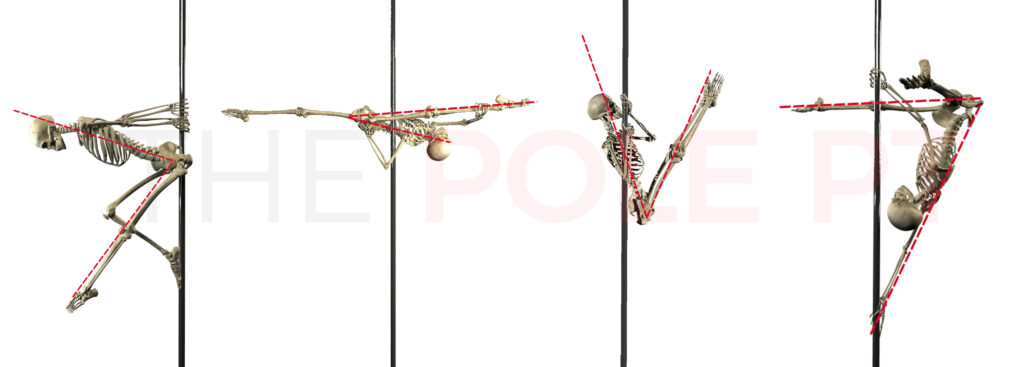
Nerdy fact 3: The muscles involved
It’s our hip flexors (primarily our psoas and illiacus assisted by our secondary hip flexors: rectus femoris, TFL and sartorius) which contract to bring our legs close to our torso.
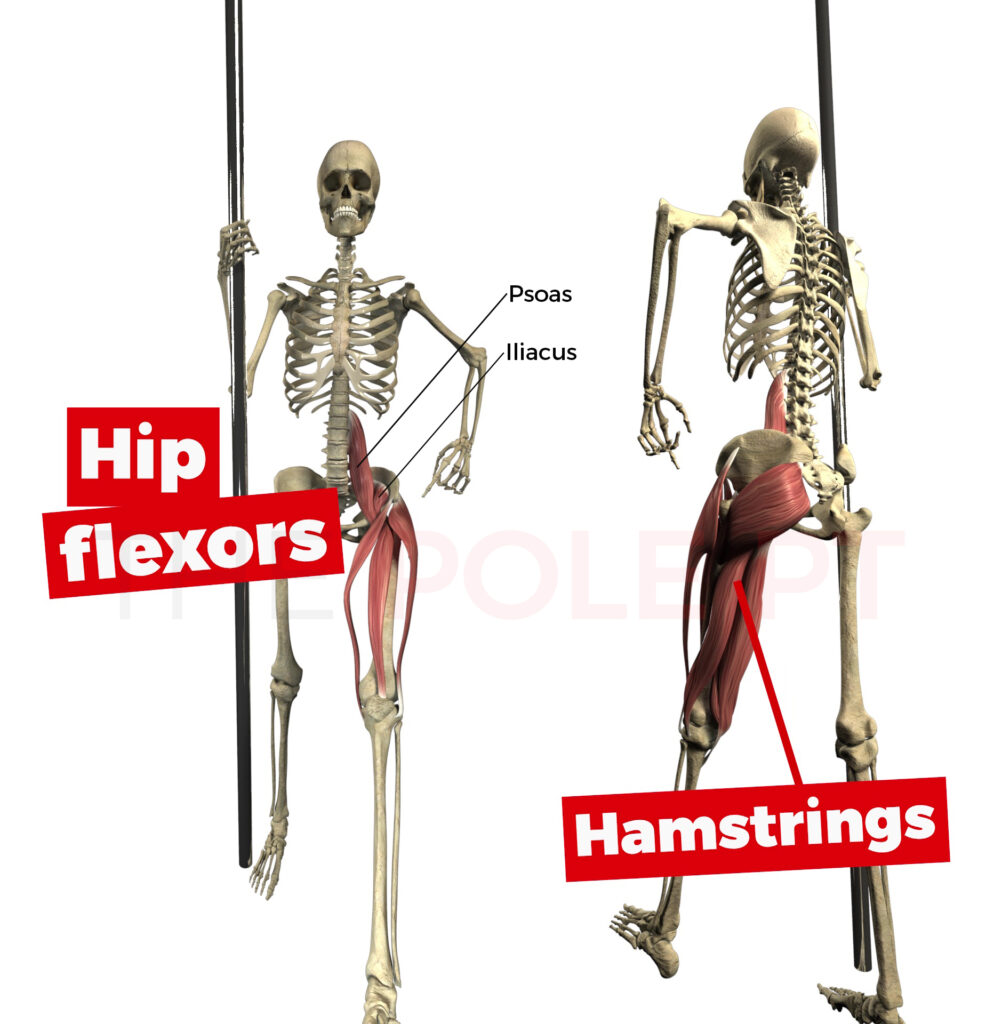
At the same time, the opposing muscles – primarily our hamstrings – are lengthened.
This is why we need lots of strength in our hip flexors combined with flexibility in our hamstrings to achieve all these fold-yerself-in-half, hip-flexiony positions.
But that brings me neatly on to my next factoid…
Nerdy fact 4: Strengthen what you stretch!
Although strength in our hip flexors is clearly important when it comes to hip flexion, hamstrings have been reported as one of the most common injury sites for pole dancers after shoulders1, so it’s important for us to strengthen our hammies as well, not just stretch them!
In particular, if we can strengthen our hamstrings in the lengthened, end-range positions that we use so much in pole, we can help reduce our risk of injury! Can I get a ‘hell yeah’ for sustainable training? “HELL YEAH!”
If you want to direct some love towards your hammies, you can check out my hamstring post for some exercise suggestions: Hello Hamstrings!
Bonus flexibility fun fact: It’s not just about the muscles! Nerve tension can limit our hip flexion range of motion, too! Check out my post: Is Nerve Tension holding back your hamstring flexibility? to find out more about that!
Nerdy fact 5: Pelvic tuck
When we’re bringing our legs up in front of us, once we reach the end range of our hip flexion mobility, we will generally tuck our pelvis under – it’s a posterior pelvic tilt and slight flexion of the lower back – this allows us to bring our legs even closer to our torso.
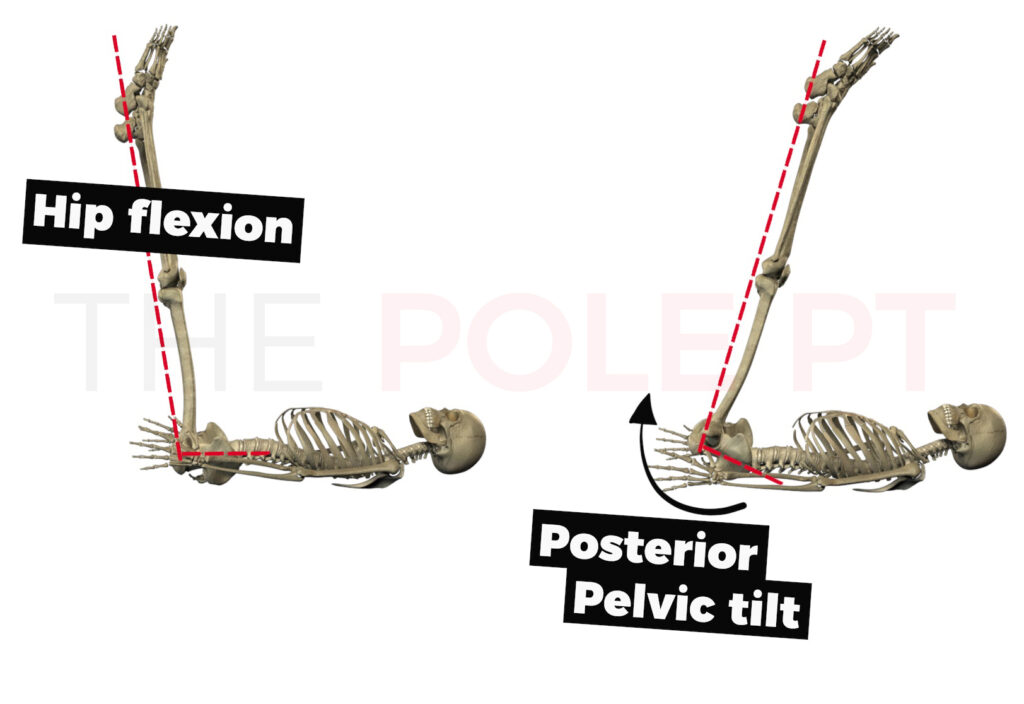
This cheeky little pelvic tuck can help us give the illusion of increased hip flexion once we’re run out of range there. It’s not that it’s ‘cheating’, it’s just the way our bodies move and something to be aware of! The amount of posterior pelvic tilt we use will depend on the position we’re trying to achieve, our own end range of hip flexion and our own strengths and weaknesses. But it’s useful to know where our own range of hip flexion ends, and to be aware of how we’re moving our pelvis/lumbar spine to help us achieve certain moves, so we can make sure we’re moving and training intentionally!
Nerdy fact 6: Everything everywhere all at once
The truth is, we hardly (if ever!) just ‘do hip flexion’ in isolation. There’s all kinds of other stuff going on when we’re moving around the pole – and all this other ‘stuff’ has an impact on the muscular engagement involved.
For example, when we’re upside down in an Ayesha, gravity is assisting us into that position of hip flexion. So, depending on our flexibility levels and our aesthetic goals, our hamstrings and glutes are probably gonna be more active because they’re contracting isometrically to help hold our legs in the air, resisting the downward pull of gravity, vs when we’re right way around and really using the strength of our hip flexors to contract concentrically and lift our legs up against gravity.
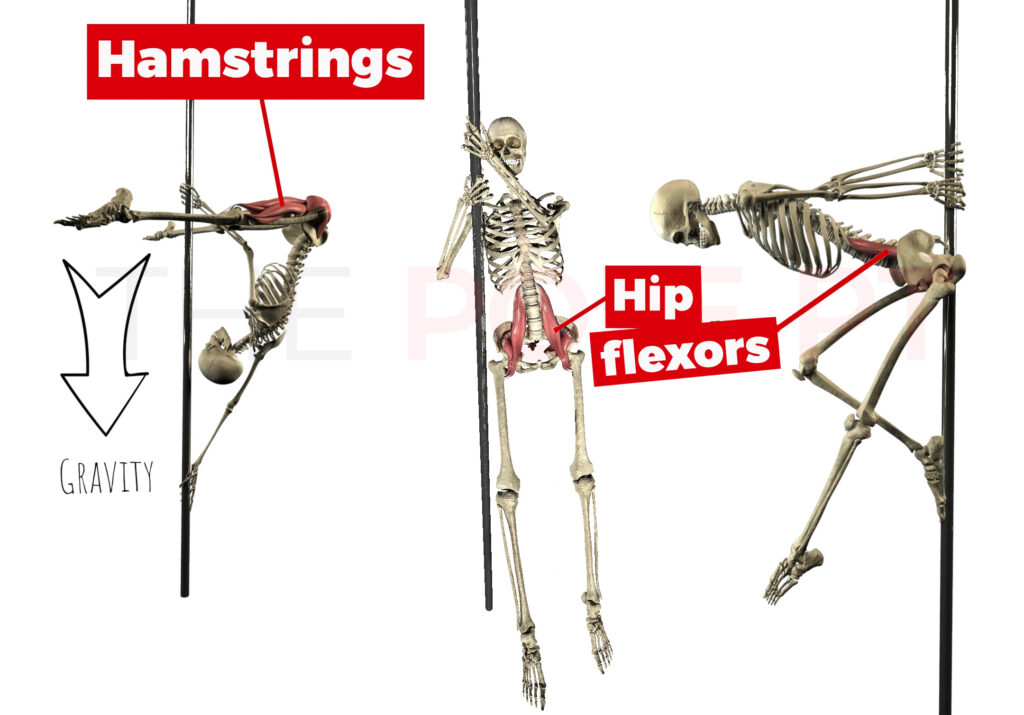
And if we’re not holding our legs in the air at all, but instead using the pole to help us hold the position, it is much more ‘passive’ – we don’t need as much of that muscular engagement and strength.
Annnnd it’s not just our position on the pole in relation to gravity (or how we’re engaging to create grip on the pole) that has an impact. The degree of hip flexion and the other joint movements involved all play a part, too.
For example, beyond that 90 degree point, our secondary hip flexors probably aren’t doing as much to help, it’s mostly our psoas/illiacus doing all the grunt work.
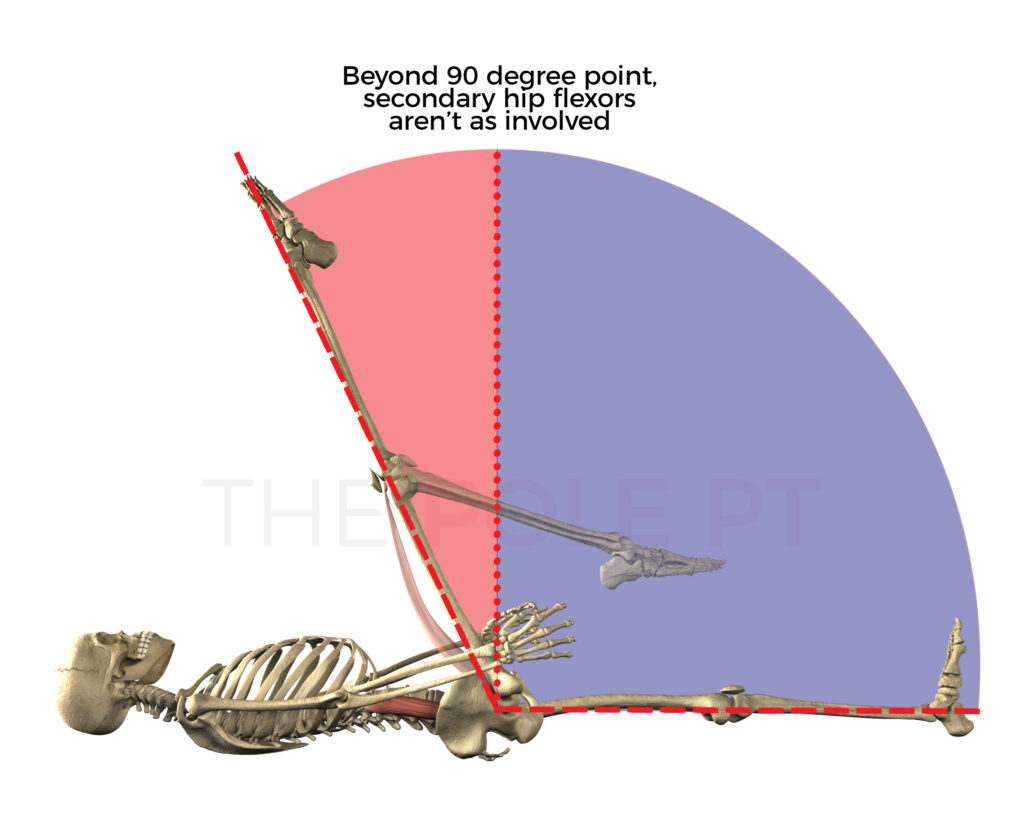
Told ya these facts were gonna be fun! 😉
Stay tuned! I’m planning a little hip flexion focused workout for my next blog post so we can start to put all this theory into practice! Bring on the pole gains!
- Nicholas, J. (2019). The psychological, physiological, and injury-related characteristics of pole dancing as a recreational activity. [Doctoral Thesis, The University of Western Australia].
Come nerd with me some more!
Enjoy geeking about the anatomy of pole dancing? Did we just become best friends? I think you might enjoy my book, Pole Anatomy!
Want to know how to strength train for pole dance? My book Strength and Conditioning for Pole is the one, friend!
Both books are available in paperback and ebook format!







